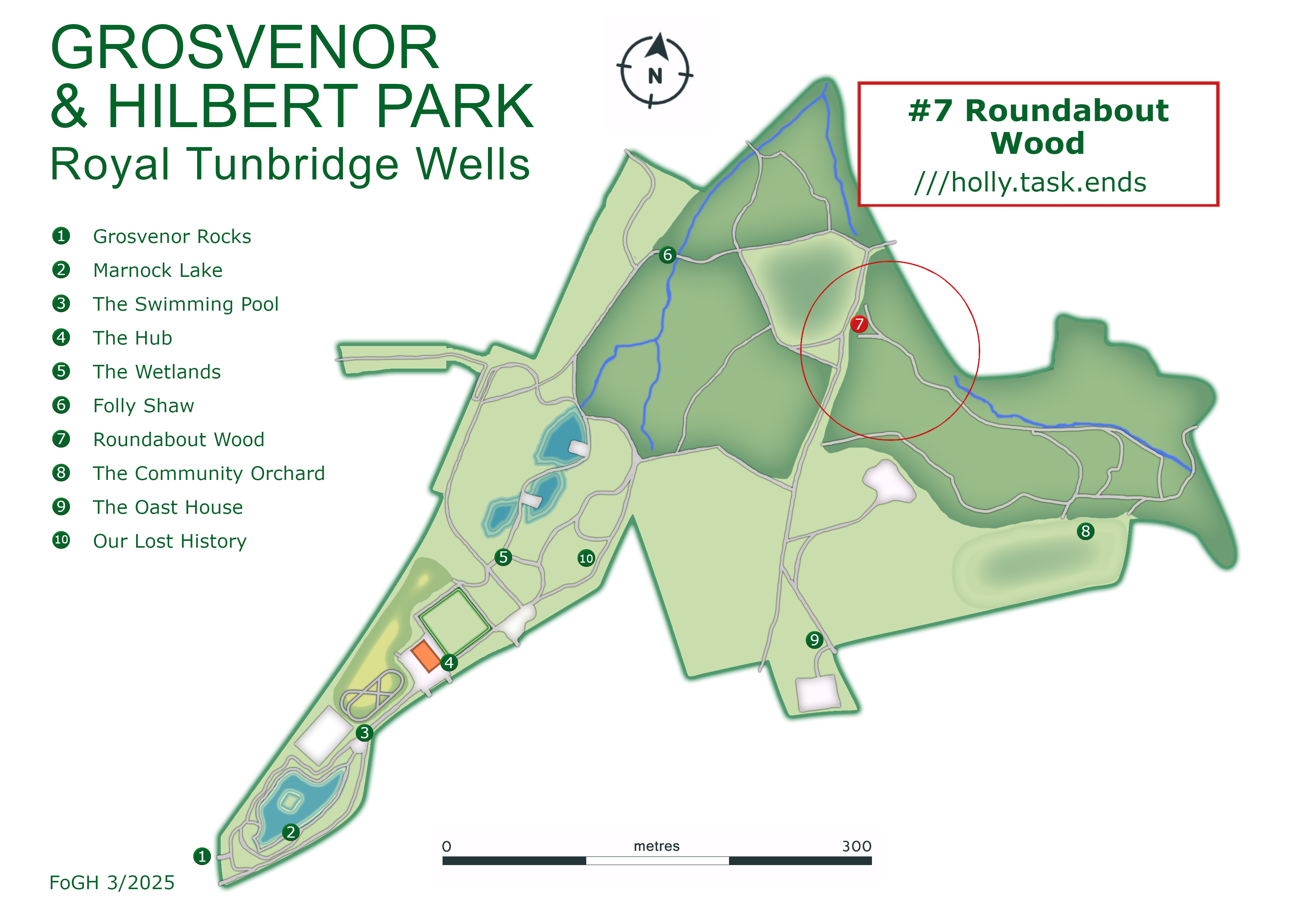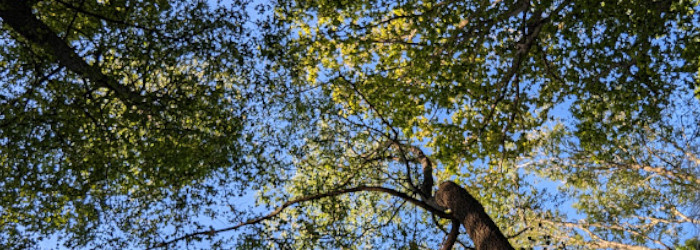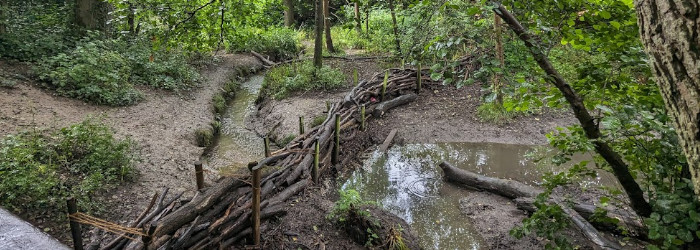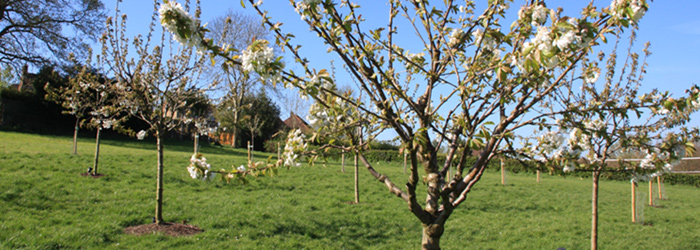
#7 Roundabout Wood

This and the next stage of the trail are not easily accessible for pushchairs and wheelchairs. We recommend jumping to Stage 9 - The Oast by proceeding up the path.
Roundabout Wood

Roundabout Wood is an area of ancient woodland with both semi natural woodland and wet woodland areas. A circular woodland path runs through the site, with boardwalk and steps allowing access all year round. The wood is on a gentle slope, above a small stream, and is made up of oak, hazel and a few beech on the dryer slopes. Alder grows on the lower damper slopes, lining the wet flushes that appear throughout the year.
The stream running through the woods has more leaky dams on it, to reduce the risk of flooding downstream. It supports a good range of wildlife, including some uncommon species of fly. The surrounding wet areas have a vast, rich insect flora, which includes both local and nationally scarce species.
Each winter KHWP volunteers coppice an area of the hazel woodland, so sunlight reaches the woodland floor and encourages new growth. This replicates how woodlands were managed in the past, providing firewood, timber and fencing materials. This method gives other plants and flowers the chance to grow.
Just For Kids

If you are following the 'brass-rubbing' trail there are three near here: some hazel nuts are near the entrance to the boardwalk and some bluebells further along the path. The third, a grasshopper, is on the main path up towards the oast house.
Roundabout Wood: Nature

Roundabout Wood contains plants that are 'indicator' species for ancient woodland - they are only found in woods that have been present for a long period of time. Among these are bluebells, wood sorrel and wood anemone. Other characteristic woodland flowers found here include dog violet, wood avens, enchanter's nightshade, yellow pimpernel, lesser celandine, lords and ladies and sanicle.
The stream running through the woodland adds to the diversity of plant life, with wetland species like opposite-leaved golden saxifrage, as well as ferns and mosses. You can also find the more unusual wood horsetail and broad-leaved helleborine, a type of orchid. On the wet valley sides ferns like hart's tongue, hard fern and lady fern grow luxuriantly.
These areas of wet woodland have a vast range of insect species, including some unusual flies. Living in the streams are a variety of creatures including pond snails and pea mussels and you may see water crickets skimming over the surface. These are relatives of the more well-known pond-skater which live in flowing water.
Ancient woodland is the richest and most complex terrestrial habitat in the UK and is home to more threatened species than any other. We are fortunate in having this remnant of a much larger forest in the park for us to enjoy.
What Next: The Community Orchard

Continue along the boardwalk to the end, follow the unmade (and sometimes muddy) path to reach the orchard.